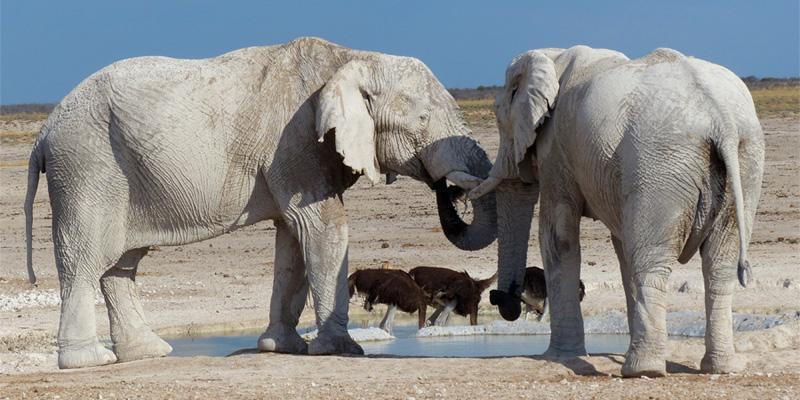
Etosha National Park
The Etosha National Park is a nature conservation area in northern Namibia and is one of the most significant game reserves in Africa. In Namibia it is by far the best known and most important national park. Today the Park covers an area of nearly 22.912 km² and is completely fenced for the protection of the animals!
Within the eastern part of the park an approximately 5.000 km² large salt pan can be found, which was formed about 2 million years ago when the Kunene Delta dried up and its riverbed shifted.
Specifications
History of the Etosha National Park
The Etosha Park was already declared a nature conservation area under German administration in 1907 by the governor of German Southwest Africa, Friedrich von Lindequist. The protection area at that time was four times bigger than today. Reason for the creation of the conservation area was the near depletion of the once abundant wildlife through poaching and big game hunting.
The protection area was decreased as from 1928 and in 1958 and 1967 further reductions took place until at the beginning of the seventies the Park received its present borders and was completely fenced in 1973.
Wildlife and Nature
The name Etosha is derived from the Oshiwambo and means “big, white place”. More than 100 mammal species and 340 different species of birds are found in the park.
Due to the fencing of the Etosha National Park the animals living in the park were depending on the water and food resources found within the fence. Thus the water supply is granted by water holes, some of natural origin some artificial.
In the western part of the park, 5 natural and 27 artificial water holes are found, whereas 29 natural and 12 artificial water holes are found in the eastern part of the park. These form the livelihood for the animals in the Etosha and also serve tourists for game viewing. On the map which each visitor receives when entering the park, the waterholes as well as the network of roads are marked.
The park has a total of four entrances: in the east the von Lindequist Gate, in the north the Nahale IyaMpinga-Tor (also called the King Nehale Gate); in the south the Andersson Gate and in the west the Otjovasondu Gate.
Accommodation facilities in the Etosha National Park
- Okaukuejo is the main camp and here you also find the main entrance into the park.
- Namutoni in the east is the former fort of the German protection troops;
- Halali is situated in the middle between Okaukuejo and Namutoni about 70 km apart from each camp respectively;
- Onkoshi is the fourth rest camp and can only be reached by shuttle from Namutoni;
- The Dolomite Camp is situated in the western part of the park.
The first three camps mentioned above have restaurants, various accommodations, camp sites, kiosk, landing strip, fuel station, etc.
To be able to visit all waterholes surrounding the respective camp one should plan a stay of at least two days.
Please note that all visitors are registered and all gates are closed at sunset and open at sun rise again. The roads within the park are gravelled and a 4x4 is not essential, but recommended during the main rain season around January. Furthermore it is important to know that it is not allowed to leave the vehicle in order to not disturb the animals or even worse to avoid becoming a welcome meal for hungry lions and other predators.







